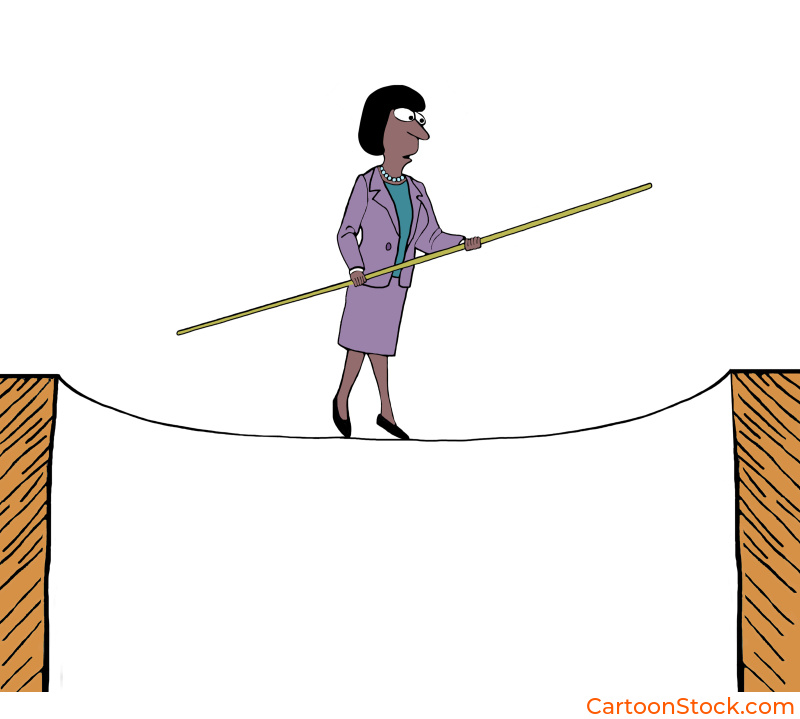Picture this: You’re scrolling through training materials when a cartoon catches your eye. It’s meant to be funny, but instead of laughing, you cringe. Someone in your organization just learned that humor can backfire spectacularly when it relies on outdated assumptions.
Using cartoons to support diversity and inclusion can be incredibly powerful, but only when done thoughtfully. The challenge? Humor walks a fine line between connecting and excluding people.
Let’s explore how avoiding stereotypes in workplace cartoons can help you create materials that actually bring people together instead of pushing them apart.
Our comprehensive guide Using Cartoons to Support Diversity, Inclusion & Belonging
Why Getting This Right Actually Matters
Cartoons work because they communicate big ideas with minimal lines. That visual shorthand makes them effective, but it also makes them risky. When you’re condensing complex human experiences into simple drawings, it becomes tempting to rely on visual shortcuts.
The problem starts when those shortcuts become stereotypes. A cartoon showing women struggling with technology, older employees confused by new processes, or cultural differences played for cheap laughs can undermine your inclusion efforts faster than you can say “team building exercise.”
Whether you’re creating training materials, onboarding content, or internal communications, avoiding stereotypes in workplace cartoons helps build trust and shows genuine respect for everyone in your organization.
Think about it this way: every cartoon is a tiny message about who belongs and who doesn’t. Make sure yours sends the right signal.
Practical Strategies for Using Cartoons to Avoid Stereotypes
Cast Your Characters Thoughtfully
Don’t default to the same type of person for different roles. Mix up who gets to be the boss, the tech expert, the new hire, or the problem solver. Include diversity in age, gender expression, ethnicity, body shape, ability, and clothing choices.
Skip the Tired Visual Clichés
We’ve all seen them: turbans as shorthand for “foreign,” women being hopeless with computers, or older employees as technology dinosaurs. These outdated tropes are easy to slip into, but they’re exactly what you want to avoid when creating inclusive content.
Check Who’s Getting the Punchline
Ask yourself: who is this joke really about? If the humor depends on someone being clueless, struggling, or marginalized because of their identity, it’s time to rethink your approach.
Flip Expectations Instead
Good workplace cartoons often work by reversing assumptions. Show the “surprising” person being the most prepared, tech-savvy, or innovative in the room. These reversals make people think while they laugh.
Pay Attention to Visual Details
Facial expressions, clothing, body language, and settings all shape how people interpret your characters. These small details can either reinforce stereotypes or challenge them.
Test Your Content Widely
If your team lacks diverse perspectives, seek feedback from a broader group. What seems harmless to one person might raise red flags for another. Better to catch these issues early than after your training goes live.
Where Using Cartoons to Avoid Stereotypes Works Best
Avoiding stereotypes becomes especially important in certain workplace contexts:
Diversity training modules where trust is essential. Internal communications about company values. Onboarding materials that set expectations for new hires. Employee newsletters tackling sensitive topics. Global team materials reaching varied cultural audiences.
When cartoons avoid stereotypes, they can actually make difficult conversations more approachable. They create space for people to discuss inclusion topics without feeling attacked or misunderstood.
For example, a cartoon showing varied reactions to a “business casual” dress code can highlight how policies affect people differently, without making anyone the villain or the victim.
The Evolution of Cartoon Representation
Early cartoons often defaulted to narrow representations, partly due to technical limitations like black ink on white paper. But as the medium evolved, so did awareness of who was being represented and who was left out.
Today, thoughtful cartoonists understand that diversity and nuance are essential tools for reflecting the real world rather than a limited slice of it. This evolution continues as workplaces become more inclusive and expectations for representation grow.
Making Inclusion Feel Natural
The best inclusive workplace cartoons don’t feel forced or preachy. They present diversity as normal and expected, not remarkable or exceptional. They help bridge conversations around changing workplace norms, from dress codes to communication styles.
When done well, these cartoons can be particularly helpful for team members who benefit from clear, visual communication about evolving workplace expectations.
Remember: avoiding stereotypes in workplace cartoons isn’t about walking on eggshells. It’s about expanding your creative toolkit to include everyone in the conversation. The result is humor that connects rather than divides, and workplace materials that actually support the inclusive culture you’re trying to build.
Q&A: Avoiding Stereotypes in Workplace Cartoons
Q: What makes a workplace cartoon feel inclusive?
A: Inclusive cartoons show a mix of people without reinforcing negative stereotypes. They make everyone feel seen without being reduced to a label.
Q: Can cartoons use humor without offending anyone?
A: Yes. Humor that observes rather than mocks tends to be more inclusive. Focus on shared experiences, absurdities, or reversals rather than punchlines at someone’s expense.
Q: How do I know if a cartoon crosses the line?
A: Ask who the joke targets and how it lands. If it requires a cultural in-joke or makes someone’s identity the butt of the joke, rethink it.
Keep Reading:
Next Article: Cartoons for employee resource groups


